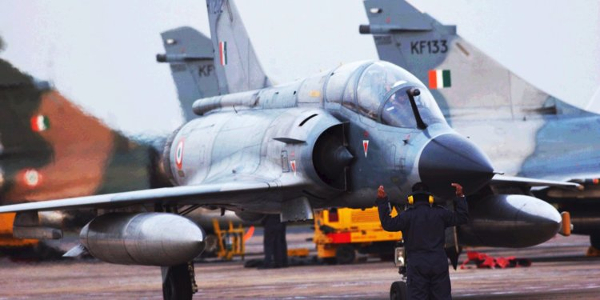Barely a year after India and Pakistan officially went nuclear with the Pokharan-2 tests in May 1998, India was posed with the unenviable challenge of possible use of nuclear weapons in case of an unintended escalation during the Kargil War. With no experience to fall back upon, it was in the heat of the conflict that India conjured up a ‘primitive’ air delivery system for nuclear weapons on Mirage-2000 fighter jets of the Indian Air Force (IAF).
With the war being limited to the Indian side of the Line of Control (LoC), use of a nuclear weapon was highly unlikely, but the need to be prepared for any contingencies was incumbent upon New Delhi. Although India conducted five nuclear tests in May 1998 to become a declared nuclear power, the structures and processes for development, deployment and employment of nuclear forces were still being put in place.
In fact, New Delhi was to release even its first draft nuclear doctrine in August 1999 after the end of Kargil War.
But Indian officials, scientists and military officials dealing with nuclear forces accepted the challenge to be prepared for any eventuality during the Kargil conflict, should the need arise.
The first official said, “After 1998, we had started working on creating strategic deterrence. It meant having an authentic nuclear weapon, reliable delivery capacity and a foolproof process to actualise any decision taken by the political leadership. Those were early days; since then, we have come a long way in all those aspects. There is hardly any similarity between then and now.”
“The weapon had been tested and we were all confident about it,” the second official said. “For delivery, we had to depend on air delivery using the IAF. They did it in a rather primitive way but it was all functional by the summer of 1999, if we needed it.”
A retired military official explained, “A casing of the nuclear weapon was concocted and fitted on the centre line of fuselage of Mirage-2000 aircraft, which is where the central ventral fuel tank is fitted. All the modifications were done locally. The take-off angle of attack of the aircraft had to be lower because of this. Essentially, if the nose was at the usual high position during take-off, the fuselage would touch the ground. It was thus lowered by 3-4 degrees and this needed some practice.”
According to the fourth official, the packed fissile material and the ‘critical parts’ for mating with the material was planned to be done at any forward operational base from where the Mirage-2000 carrying the nuclear weapon would take off. There were rehearsals done and the process for mating and loading on aircraft was fine-tuned, with the improvements going on till August 1999, even after Kargil War ended on July 26, the official said.
“It was a rather primitive way of delivering the nuclear weapon,” the second official said. “The weapon would be dropped by gravity from the aircraft. At the altitude at which we wanted it to be detonated, it would have been activated by a barometric device. We had done the calculations based on the kind of damage envisaged.”
The usual altitude, at which the nuclear weapon was meant to detonate, was between 200 and 500 feet above the ground, the fourth official said.
All four retired officials agreed that the 1999 Kargil experience has little relevance to the current scenario, when India has precision delivery systems, an assured second-strike capability and a responsible nuclear doctrine.
Source:IE
Image Courtesy: BI
You may also like
-
IAF Aircraft Set Course For Exercise Eastern Bridge VII At Oman
-
IAF Set To Host The Indian Defence Aviation Exposition-II At Jodhpur
-
Defence Secretary to co-chair 5th India-Philippines Joint Defence Cooperation Committee meeting in Manila
-
Simultaneous Launch Of ‘malpe And Mulki’, Fourth And Fifth Ships Of Asw Swc (Csl) Project
-
Aatmanirbharta in Defence: MoD signs Contract with HAL for 240 AL-31FP Aero Engines for Su-30MKI Aircraft
